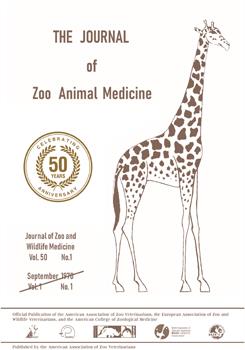Live-stranded pinnipeds often present to rehabilitation centers systemically debilitated with dehydration and poor perfusion. In many terrestrial mammals, blood lactate elevation has been correlated with global tissue hypoxia and decreased circulating blood volume. Serial blood lactate measurements in companion animals and humans have been used to guide fluid resuscitation therapy and evaluate prognosis. The primary objective of this study was to evaluate the prognostic value of serial blood lactate levels in live-stranded pinnipeds in a rehabilitation setting. The secondary objectives were to evaluate the use of a point-of-care lactate meter, and potassium oxalate–sodium fluoride (gray-top) tubes for storing samples for lactate analysis in pinniped patients. Fifty-five live-stranded pinnipeds (30 northern elephant seals [Mirounga angustirostris], 21 Pacific harbor seals [Phoca vitulina richardsi], and four California sea lions [Zalophus californianus]) that presented to a rehabilitation center were manually restrained for blood collection and lactate measurement using a point-of-care analyzer (Lactate Plus™) prior to fluid or other medical therapy. Lactate measurements were repeated 72 hr post admission and prior to euthanasia or release. Plasma samples from gray-top tubes were frozen for 30–100 days at –80°C, then thawed and evaluated using both the LactatePlus and bench-top (ABL 815) analyzers. The point-of-care analyzer was successful in measuring lactate in pinnipeds. Gray-top tubes were effective at preserving lactate levels in frozen plasma samples for up to 100 days. Released animals had significantly greater lactate clearance at 72 hr (P = 0.039) than animals that died or were euthanized. Therefore, lactate clearance, determined by serial blood lactate measurements, may be useful for evaluating prognosis in live-stranded pinnipeds. Initial lactate and lactate values prior to euthanasia or release were not significantly associated with outcome. Given these findings, clinicians should interpret isolated lactate values in pinnipeds with caution.
How to translate text using browser tools
5 April 2019
EVALUATION OF SERIAL BLOOD LACTATE AND THE USE OF A POINT-OF-CARE LACTATE METER IN LIVE-STRANDED PINNIPEDS
Matt Marinkovich,
Raymund F. Wack,
Cara L. Field,
Sophie T. Whoriskey,
Philip H. Kass,
Jenessa Gjeltema
ACCESS THE FULL ARTICLE
Lactate clearance
LactatePlus
Mirounga angustirostris
Phoca vitulina richardsi
pinniped rehabilitation
Zalophus californianus





